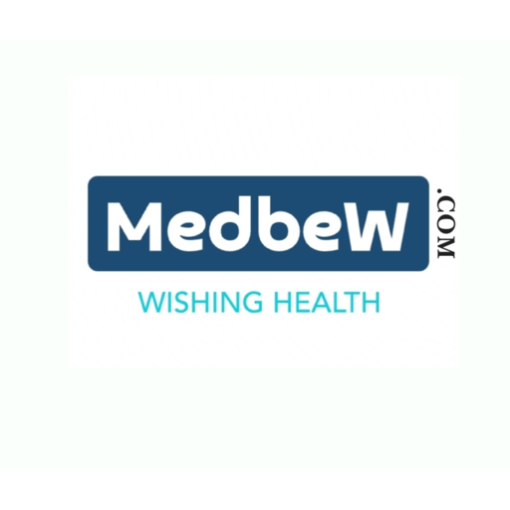Regular exercise is one of the most effective ways to improve and maintain overall health. Its benefits extend far beyond just weight management, affecting various aspects of both physical and mental well-being. Whether it’s reducing the risk of chronic diseases, boosting mood, or improving sleep, exercise plays a critical role in our daily lives.
This article will explore the numerous benefits of regular exercise, types of physical activities, how much exercise is recommended, and practical tips for getting started.
1. Physical Health Benefits of Regular Exercise
A. Weight Management
One of the most well-known benefits of exercise is its ability to help control body weight. Regular physical activity burns calories, which helps maintain a healthy weight or supports weight loss. The more intense the activity, the more calories burned. Activities like running, cycling, swimming, and even brisk walking contribute to energy expenditure and help prevent weight gain.
B. Strengthens Muscles and Bones
Exercise plays a key role in building and maintaining muscle strength and bone density. Resistance training exercises, such as weight lifting, squats, and push-ups, are particularly effective for enhancing muscle strength. Weight-bearing exercises like walking, jogging, and hiking help increase bone density, reducing the risk of osteoporosis and fractures, especially as we age.
C. Improves Cardiovascular Health
Cardiovascular (aerobic) exercises, such as running, swimming, and cycling, significantly enhance heart and lung function. Regular aerobic exercise strengthens the heart muscle, improves blood circulation, reduces cholesterol levels, and lowers blood pressure. These improvements reduce the risk of heart disease, stroke, and high blood pressure.
D. Boosts Immune Function
Regular physical activity has been shown to improve the immune system. Moderate exercise can promote healthy circulation, which allows immune cells to perform their protective functions more effectively. This helps the body fight off infections, reduce inflammation, and potentially lower the risk of chronic diseases like cancer and diabetes.
E. Increases Longevity
Numerous studies show that people who exercise regularly live longer than those who do not. Exercise reduces the risk of dying from heart disease, cancer, and other chronic illnesses. It also contributes to a higher quality of life in old age by maintaining mobility, balance, and strength.
2. Mental Health Benefits of Regular Exercise
A. Reduces Stress and Anxiety
Exercise is a powerful tool for managing stress and anxiety. Physical activity triggers the release of endorphins, chemicals in the brain that act as natural mood elevators. Exercise also reduces levels of cortisol, a hormone associated with stress. Whether through a peaceful yoga session or a high-intensity workout, exercise provides a healthy outlet for relieving tension and anxiety.
B. Boosts Mood and Happiness
Regular physical activity is closely linked to improvements in mood. Exercise helps regulate serotonin, dopamine, and endorphins, which are brain chemicals associated with feelings of happiness and well-being. Studies have shown that regular exercise can be as effective as medication for treating mild to moderate depression.
C. Enhances Cognitive Function
Exercise improves brain function by increasing blood flow to the brain and promoting the growth of new neurons. It enhances memory, concentration, and learning abilities. Regular physical activity has been shown to reduce the risk of cognitive decline and conditions such as Alzheimer’s disease.
D. Improves Sleep Quality
Regular physical activity can help you fall asleep faster and improve sleep quality. Exercise has a calming effect on the mind and helps regulate the body’s circadian rhythms, making it easier to maintain a consistent sleep schedule. People who engage in regular physical activity tend to experience deeper, more restorative sleep.
3. Types of Exercise
Different types of exercise offer unique benefits. A well-rounded exercise routine should include a variety of activities to target all aspects of physical health:
A. Cardiovascular (Aerobic) Exercise
Aerobic exercises increase the heart rate and improve cardiovascular health. Examples include running, swimming, cycling, dancing, and brisk walking. These activities help to improve stamina, endurance, and overall heart function.
B. Strength Training (Resistance Exercise)
Strength training focuses on building muscle strength and endurance. Examples include weight lifting, push-ups, squats, and resistance band exercises. Strength training is essential for maintaining muscle mass, improving bone density, and supporting metabolic health.
C. Flexibility and Balance Exercises
Flexibility exercises, such as stretching and yoga, improve the range of motion in joints and muscles. Balance exercises, such as tai chi and Pilates, help improve coordination and prevent falls, particularly in older adults.
D. High-Intensity Interval Training (HIIT)
HIIT involves alternating between short bursts of intense exercise and periods of rest or low-intensity activity. This type of training is highly effective for burning calories, improving cardiovascular fitness, and building strength in a short period.
4. How Much Exercise Is Recommended?
The amount of exercise needed depends on individual goals and fitness levels. However, general guidelines provided by health organizations recommend:
- For adults: At least 150 minutes of moderate-intensity aerobic activity or 75 minutes of vigorous-intensity aerobic activity per week, combined with muscle-strengthening exercises two or more days a week.
- For children and adolescents: At least 60 minutes of physical activity per day, including aerobic, muscle-strengthening, and bone-strengthening exercises.
- For older adults: Exercise that focuses on maintaining balance, flexibility, strength, and cardiovascular health. Older adults should aim for at least 150 minutes of moderate-intensity aerobic activity weekly, with a focus on activities that enhance mobility and prevent falls.
5. Practical Tips for Starting and Maintaining an Exercise Routine
A. Start Slow and Build Gradually
If you’re new to exercise, start with short, manageable sessions and gradually increase the intensity and duration. Walking is an excellent way to begin.
B. Set Realistic Goals
Set specific, achievable goals to stay motivated. Whether it’s walking 10,000 steps a day or running a 5K, having a goal can provide direction and purpose.
C. Find Activities You Enjoy
Choose activities that you find fun and engaging. Whether it’s dancing, swimming, cycling, or yoga, doing something you enjoy will make it easier to stick to a routine.
D. Incorporate Exercise into Daily Life
Find ways to incorporate more movement into your daily routine. Take the stairs instead of the elevator, walk or cycle to work, or engage in active hobbies such as gardening or playing sports.
E. Stay Consistent
Consistency is key to reaping the long-term benefits of exercise. Aim to incorporate physical activity into your daily life, even if it’s just a short walk or stretching session.
Conclusion
Regular exercise is essential for maintaining both physical and mental health. Its benefits extend to weight management, cardiovascular health, muscle and bone strength, mental well-being, and even longevity. By incorporating a variety of activities into your routine and staying consistent, you can enjoy a healthier, more vibrant life. Whether you’re a beginner or a seasoned athlete, it’s never too late to start reaping the benefits of regular physical activity.
- American Heart Association. (2021). Recommendations for Physical Activity in Adults. Retrieved from heart.org
- World Health Organization. (2020). Physical Activity. Retrieved from who.int
- Mayo Clinic. (2022). Exercise: 7 Benefits of Regular Physical Activity. Retrieved from mayoclinic.org
- Centers for Disease Control and Prevention (CDC). (2022). Benefits of Physical Activity. Retrieved from cdc.gov
- Harvard Medical School. (2021). The Mental Health Benefits of Exercise. Retrieved from health.harvard.edu
- National Institute on Aging. (2022). Exercise and Physical Activity: Your Everyday Guide from the National Institute on Aging. Retrieved from nia.nih.gov
- Johns Hopkins Medicine. (2022). The Effects of Exercise on Your Body. Retrieved from hopkinsmedicine.org
- The Lancet. (2012). Global Physical Activity Levels: Surveillance Progress, Pitfalls, and Prospects. Retrieved from thelancet.com






